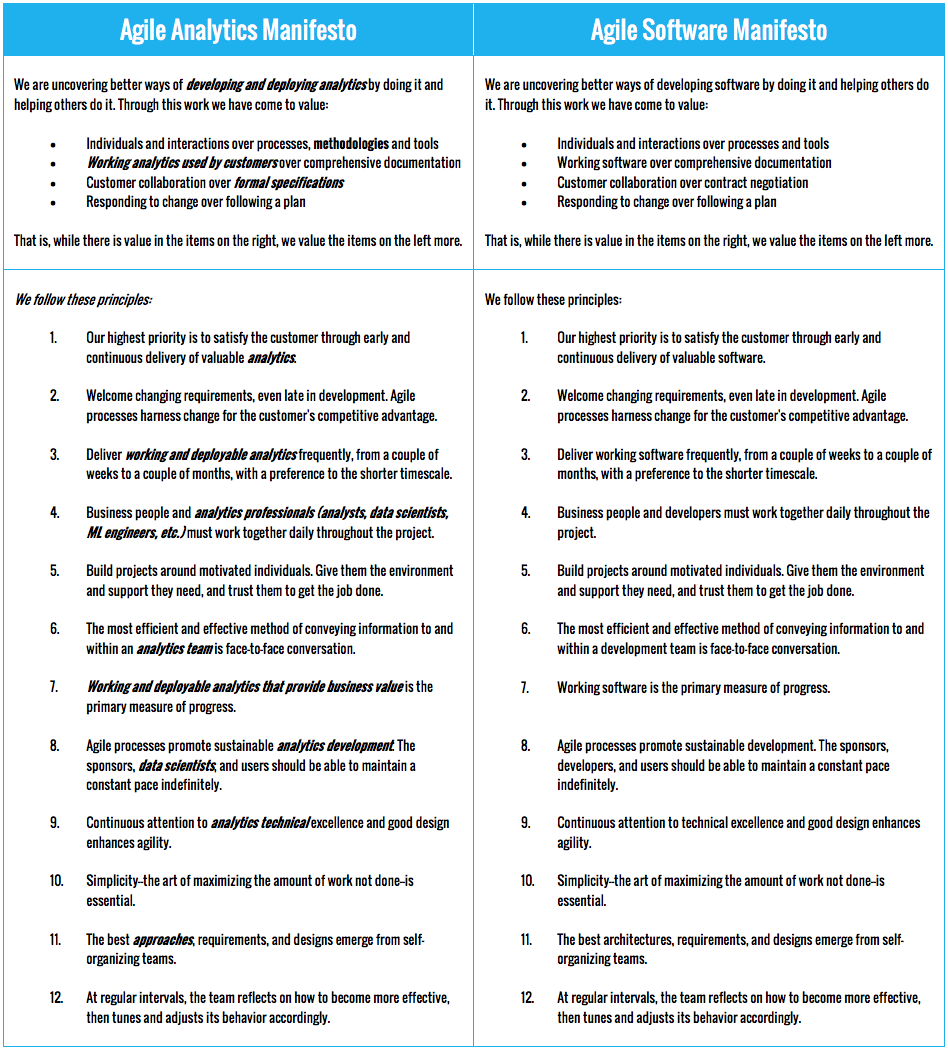
IIA recently attended the Strata Data Conference in New York City where several of the presenters discussed using agile development processes for analytics work. Many organizations struggle with implementing agile or don’t see the expected results because they treat agile as just another process.
If you are considering the use of agile development for analytics it is critical to remember that agile is much more than a process – it is a philosophical and cultural approach to delivering customer value. In fact, the agile philosophy was introduced first. The agile process has evolved and refined over the years since then to support the implementation of the philosophy for software development.
These processes have not yet been broadly developed or refined for use in analytics. It is important for analytics leaders looking to implement agile processes to use the established agile software development processes as a starting point but alter the roles and processes to better align with analytic development and deployment based on the type of projects being delivered.
The ideas behind agile were originally conceived on a ski trip in 2001 and ultimately published as the Manifesto for Agile Software Development. The Agile Manifesto outlines areas of emphasis and a series of 12 principles. I’ve adjusted these principles below to articulate an Agile Analytics Manifesto where an analytics team’s “customers” are its internal business partners and stakeholders. A comparison to the original Agile Manifesto is on the right. If you are implementing or considering an agile process for your analytics team they should understand, believe and practice these principles to ensure success before standing up an ungrounded process.
